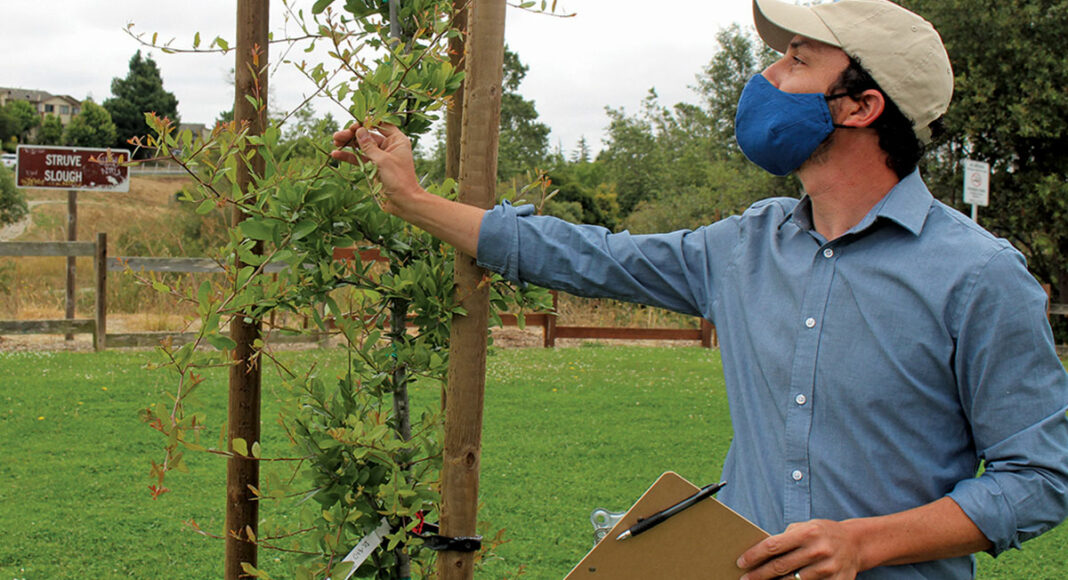Like other nonprofits in Santa Cruz County, Watsonville Wetlands Watch has had to adapt to a new normal amid the ongoing Covid-19 pandemic.
When shelter-in-place restrictions went into effect in mid-March, the organization immediately started working on putting all of its programs and field trips online, and participants of its Wetlands Stewards program were given a virtual graduation.
“As a nonprofit involved in education, it’s been a really significant change for us,” said Jonathan Pilch, executive director of Watsonville Wetlands Watch (WWW). “But it has also emphasized how important the work we do is … Stewardship of open spaces, and youth engagement has never felt more important.”
Moving into summer, WWW began concentrating and deepening its programs, finding ways to expand its impact and outreach in new ways. Pilch said the organization wanted to focus on programs that not only support the environment but public health, as well.
One new endeavor is the Climate Corps Leadership Institute, which kicked off this week. Twelve students from three high schools in Watsonville will learn leadership skills with a focus on the environment, such as addressing climate change, tree planting at schools and parks and slough restoration.
The institute, which grew out of WWW’s Green Careers program, was organized with support from other nonprofits and leaders both locally and at the state level. Students will participate virtually and in-person.
Pilch said the institute will be a paid internship—something the nonprofit thought was “vital” during the pandemic.
“With unemployment so high, especially for older teens … it is so important to provide some economic benefits,” he said.
In addition to the Climate Corps, WWW recently worked with the Pajaro Valley Unified School District in providing thousands of take-home kits for middle school students as part of its Extended Learning Program. The kits give students a chance for hands-on learning—along the slough trails, or even in their own backyard.
“We wanted to make nature as accessible to them as possible,” Pilch said. “It gets them out of the house, gives them exercise, some peace of mind and a chance to notice things they normally wouldn’t.”
WWW has also continued its work with the city to invigorate the Watsonville Community Forest project, which aids Watsonville’s Urban Greening Plan. A grant from the California Department of Forestry and Fire Protection has helped fund the planting of hundreds of trees across the city.
Watsonville’s wetlands are the state’s third-largest remaining coastal freshwater wetlands, running through the city until they connect with the Pajaro River and the Monterey Bay National Marine Sanctuary. They support over 270 bird species, and 23 of its native plants and animals are listed as threatened, endangered, or species of special concern.
With so many residents using the slough trails to exercise and get fresh air during shelter-in-place, WWW wants to remind everyone to be courteous of each other and the natural habitats. This includes staying on the trails themselves as much as possible, using pet waste bags and maintaining a six-foot distance from others.
Also, Pilch encouraged: Observe the environment around you. Wildlife can be viewed from the trails if you stop and look closely. Bird watching is a popular activity in the Pajaro Valley; in a couple of months, fall migration will begin, and a diversity of birds from as far north as the Arctic Circle will stop in Watsonville’s wetlands.
“There has never been a more appropriate time than right now to enjoy this amazing resource,” Pilch said.













